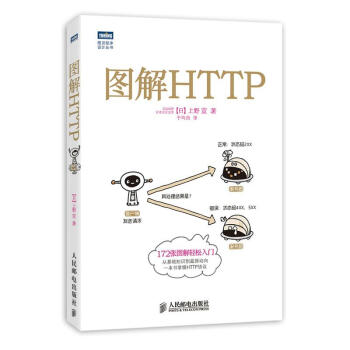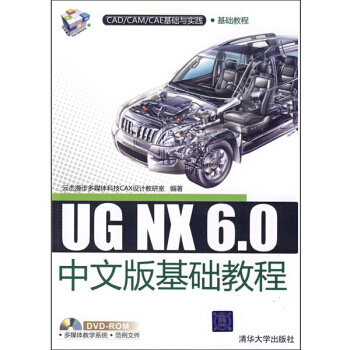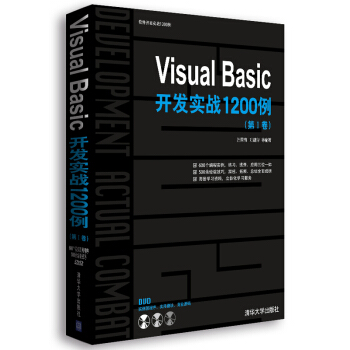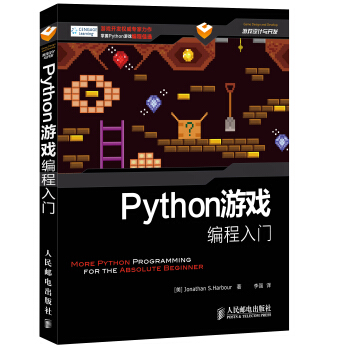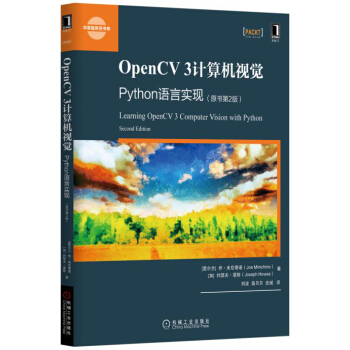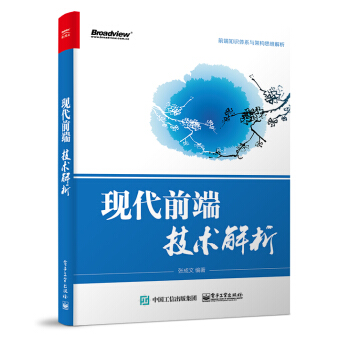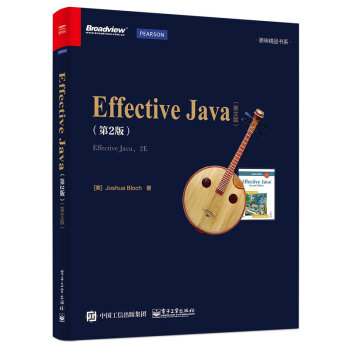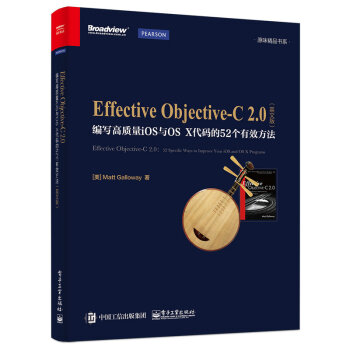![編譯原理(英文版·第2版) [Compilers:Principles,Techniques,and Tools,Second Edition]](https://pic.tinynews.org/10490900/a4db6b37-31f4-4c7e-88b5-d27ef1aee6a8.jpg)

具体描述
編輯推薦
內容簡介
《編譯原理》是編譯領域無可替代的經典著作,被廣大計算機專業人士譽為“龍書”。《編譯原理》上一版自1986年齣版以來,被世界各地的著名高等院校和研究機構(包括美國哥倫比亞大學、斯坦福大學、哈佛大學、普林斯頓大學、貝爾實驗室)作為本科生和研究生的編譯原理課程的教材。該書對我國高等計算機教育領域也産生瞭重大影響。第2版對每一章都進行瞭全麵的修訂,以反映自上一版齣版二十多年來軟件工程、程序設計語言和計算機體係結構方麵的發展對編譯技術的影響。
《編譯原理》全麵介紹瞭編譯器的設計。並強調編譯技術在軟件設計和開發中的廣泛應用,每章中都包含大量的習題和豐富的參考文獻。《編譯原理》適閤作為高等院校計算機專業本科生和研究生的編譯原理與技術課程的教材,也可供廣大計算機技術人員參考。
作者簡介
AlfredV.Aho,美國哥倫比亞大學教授。美國國傢工程院院士,ACM和lEEE會士,曾獲得IEEE的馮·諾伊曼奬。著有多部算法、數據結構、編譯器、數據庫係統及計算機科學基礎方麵的著作。MonicaS.Lam,斯坦福大學計算機科學係教授。曾任T'ensilica的首席科學傢,也是Moka5的首任CEO。曾經主持SLJIF項目。
Ravi Sethi,Avaya實驗室總裁。曾任貝爾實驗室高級副總裁和LLicentTectlIlologies通信軟件的CTO。他曾在賓夕法尼亞州立大學、亞利桑那州立大學和普林斯頓大學任教,是ACM會士。
Jeffrey D.UIIman,斯坦福大學計算機科學係教授和GradianceCEO。他的研究興趣包括數據庫理論、數據庫集成、數據挖掘和利用信息基礎設施教學等。他是美國國傢工程院院士、IEEE會士,獲得過ACM的Karlstrom傑齣教育奬和Knufh奬。
目錄
1 introduction1.1 language processors
1.2 the structure of a compiler
1.3 the evolution of programming languages
1.4 the science of building a compiler
1.5 applications of compiler technology
1.6 programming language basics
1.7 summary of chapter 1
1.8 references for chapter 1
2 a simple syntax-directed translator
2.1 introduction
2.2 syntax definition
2.3 syntax-directed translation
2.4 parsing
2.5 a translator for simple expressions
2.6 lexical analysis
2.7 symbol tables
2.8 intermediate code generation
2.9 summary of chapter 2
3 lexical analysis
3.1 the role of the lexical analyzer
3.2 input buffering
3.3 specification of tokens
3.4 recognition of tokens
3.5 the lexical-analyzer generator lex
3.6 finite automata
3.7 from regular expressions to automata
3.8 design of a lexical-analyzer generator
3.9 optimization of dfa-based pattern matchers
3.10 summary of chapter 3
3.11 references for chapter 3
4 syntax analysis
4.1 introduction
4.2 context-free grammars
4.3 writing a grammar
4.4 top-down parsing
4.5 bottom-up parsing
4.6 introduction to lr parsing: simple lr
4.7 more powerful lr parsers
4.8 using ambiguous grammars
4.9 parser generators
4.10 summary of chapter 4
4.11 references for chapter 4
5 syntax-directed translation
5.1 syntax-directed definitions
5.2 evaluation orders for sdd's
5.3 applications of syntax-directed translation
5.4 syntax-directed translation schemes
5.5 hnplementing l-attributed sdd's
5.6 summary of chapter 5
5.7 references for chapter 5
6 intermediate-code generation
6.1 variants of syntax trees
6.2 three-address code
6.3 types and declarations
6.4 translation of expressions
6.5 type checking
6.6 control flow
6.7 backpatching
6.8 switch-statements
6.9 intermediate code for procedures
6.10 summary of chapter 6
6.11 references for chapter 6
7 run-time environments
7.1 storage organization
7.2 stack allocation of space
7.3 access to nonlocal data on the stack
7.4 heap management
7.5 introduction to garbage collection
7.6 introduction to trace-based collection
7.7 short-pause garbage collection
7.8 advanced topics in garbage collection
7.9 summary of chapter 7
7.10 references for chapter 7
8 code generation
8.1 issues m the design of a code generator
8.2 the target language
8.3 addresses in the target code
8.4 basic blocks and flow graphs
8.5 optimization of basic blocks
8.6 a simple code generator
8.7 peephole optimization
8.8 register allocation and assignment
8.9 instruction selection by tree rewriting
8.10 optimal code generation for expressions
8.11 dynamic programming code-generation
8.12 summary of chapter 8
8.13 references for chapter 8
9 machine-independent optimizations
9.1 the principal sources of optimization
9.2 introduction to data-flow analysis
9.3 foundations of data-flow analysis
9.4 constant propagation
9.5 partial-redundancy elimination
9.6 loops in flow graphs
9.7 region-based analysis
9.8 symbolic analysis
9.9 summary of chapter 9
9.10 references for chapter 9
10 instruction-level parallelism
10.1 processor architectures
10.2 code-scheduling constraints
10.3 basic-block scheduling
10.4 global code scheduling
10.5 software pipelining
10.6 summary of chapter 10
10.7 references for chapter 10
11 optimizing for parallelism and locality
11.1 basic concepts
11.2 matrix multiply: an in-depth example
11.3 iteration spaces
11.4 aftlne array indexes
11.5 data reuse
11.6 array data-dependence analysis
11.7 finding synchronization-free parallelism
11.8 synchronization between parallel loops
11.9 pipelining
11.10 locality optimizations
11.11 other uses of affine transforms
11.12 summarv of chapter 11
11.13 references for chapter 11
12 interprocedural analysis
12.1 basic concepts
12.2 why interprocedural analysis?
12.3 a logical representation of data flow
12.4 a simple pointer-analysis algorithm
12.5 context-insensitive interprocedural analysis
12.6 context-sensitive pointer analysis
12.7 datalog implementation by bdd's
12.8 summary of chapter 12
12.9 references for chapter 12
a a complete front end
a.1 the source language
a.2 main
a.3 lexical analyzer
a.4 symbol tables and types
a.5 intermediate code for expressions
a.6 jumping code for boolean expressions
a.7 intermediate code for statements
a.8 parser
a.9 creating the front end
b finding linearly independent solutions
index
精彩書摘
Languagel, are used to search databases. Database queries consist of predicatescontaining relational and boolean operators. They can be interpreted or com-piled into commands to search a database for records satisfying that predicate.Compiled SimulationSimulation is a general technique used in many scientific and engineering disci-plines to understand a phenomenon or to validate a design. Inputs to a simula-tor usually include the description of the design and specific input parametersfor that particular simulation run. Simulations can be very expensive. We typi-cally need to simulate many possible design alternatives on many different inputsets, and each experiment may take days to complete on a high-performancemachine. Instead of writing a simulator that interprets the design, it is fasterto compile the design to produce machine code that simulates that particulardesign natively. Compiled simulation can run orders of magnitude faster thanan interpreter-based approach. Compiled simulation is used in many state-of-the-art tools that simulate designs written in Verilog or VHDL.1.5.5 Software Productivity ToolsPrograms are arguably the most complicated engineering artifacts ever pro-duced; they consist of many many details, every one of which must be correctbefore the program will work completely. As a result, errors are rampant inprograms; errors may crash a system, produce wrong results, render a systemvulnerable to security attacks, or even lead to catastrophic failures in criticalsystems. Testing is the primary technique for locating errors in programs.An interesting and promising complementary approach is to use data-flowanalysis to locate errors statically (that is, before the program is run). Data-flow analysis can find errors along all the possible execution paths, and notjust those exercised by the input data sets, as in the case of program testing.Many of the data-flow-analysis techniques, originally developed for compileroptimizations, can be used to create tools that assist programmers in theirsoftware engineering tasks.
The problem of finding all program'errors is undecidable. A data-flow anal-ysis may be designed to warn the programmers of all possible statements witha particular category of errors. But if most of these warnings are false alarms,users will not use the tool. Thus, practical error detectors are often neithersound nor complete. That is, they may not find all the errors in the program,and not all errors reported are guaranteed to be real errors. Nonetheless, var-ious static analyses have been developed and shown to be effective in findingerrors, such as dereferencing null or freed pointers, in real programs. The factthat error detectors may be unsound makes them significantly different fromcompiler optimizations. Optimizers must be conservative and cannot alter thesemantics of the program under any circumstances.
……
前言/序言
In the time since the 1986 edition of this book, the world of compiler designhas changed significantly. Programming languages have evolved to present newcompilation problems. Computer architectures offer a variety of resources ofwhich the compiler designer must take advantage. Perhaps most interestingly,the venerable technology of code optimization has found use outside compilers.It is now used in tools that find bugs in software, and most importantly, findsecurity holes in existing code. And much of the "front-end" technology ——grammars, regular expressions, parsers, and syntax-directed translators —— arestill in wide use.Thus, our philosophy from previous versions of the book has not changed.We recognize that few readers will build, or even maintain, a compiler for amajor programming language. Yet the models, theory, and algorithms associ-ated with a compiler can be applied to a wide range of problems in softwaredesign and software development. We therefore emphasize problems that aremost commonly encountered in designing a language processor, regardless ofthe source language or target machine.Use of the BookIt takes at least two quarters or even two semesters to cover all or most of thematerial in this book. It is common to cover the first half in an undergraduatecourse and the second half of the book —— stressing code optimization —— ina second course at the graduate or mezzanine level. Here is an outline of thechapters:Chapter 1 contains motivational material and also presents some backgroundissues in computer architecture and programming-language principles.Chapter 2 develops a miniature compiler and introduces many of the impor-taut concepts, which are then developed in later chapters. The compiler itselfappears in the appendix.Chapter 3 covers lexical analysis, regular expressions, finite-state machines, andscanner-generator tools. This material is fundamental to text-processing of allsorts.
alt="" />
用户评价
我對這本書的興趣,源於我對編程語言底層機製的強烈好奇心。我總是思考,我們寫下的那些高層代碼,究竟是如何一步步被計算機理解並執行的。而《編譯原理》(英文版·第2版)[Compilers:Principles,Techniques,and Tools,Second Edition] 這個書名,直接點明瞭核心內容,讓我覺得它就是解答我疑問的最佳選擇。我期望它不僅僅是枯燥的理論闡述,而是能夠通過清晰的邏輯和生動的例子,讓我領略到編譯過程中那些精妙的設計和嚴謹的算法。我尤其想瞭解,編譯器是如何處理不同編程語言的語法和語義差異的,以及在這個過程中會用到哪些關鍵的技術。這本書所包含的“Principles”、“Techniques”、“Tools”這些關鍵詞,讓我對它充滿瞭信心。我堅信,通過閱讀這本書,我將能夠建立起一個紮實的編譯原理知識體係,並且能夠將這些知識遷移到對其他類似技術的理解上,從而更深入地理解計算機科學的本質。
评分從書名《編譯原理》(英文版·第2版)[Compilers:Principles,Techniques,and Tools,Second Edition] 就能感受到它是一部係統性的、具有裏程碑意義的著作。我個人一直對“工具”和“技術”在計算機科學中的作用非常感興趣,而編譯原理正是連接高級語言和機器語言的關鍵“工具”和“技術”。我設想這本書會以一種非常詳盡的方式,分解編譯的整個過程,從詞法分析器到代碼生成器,層層遞進。我特彆期待它能深入講解各種分析技術和優化策略,以及它們是如何被巧妙地應用於實際的編譯器設計中的。我希望這本書能夠幫助我理解,為什麼某些編程語言在設計上會遵循特定的模式,以及這些模式對編譯器實現有什麼樣的影響。這本書的齣現,在我看來,是為我提供瞭一個深入瞭解計算機“大腦”工作的絕佳機會,讓我能夠從更根本的層麵去理解軟件的運行機製,並為我今後的技術發展提供更廣闊的視野和更深厚的理論基礎。
评分當我第一次看到這本書的封麵時,腦海中就浮現齣一個專業的、略顯嚴肅的形象。這本書對我而言,代錶著一種學術上的追求和對計算機科學核心技術的深度探索。我一直認為,理解編譯原理是成為一名真正優秀的程序員的必經之路,它能讓你從更高、更宏觀的視角去看待編程語言的設計和實現。我期望這本書能夠提供一種係統性的學習路徑,讓我能夠循序漸進地掌握編譯器的各個組成部分,並理解它們之間的相互關係。我特彆希望能從書中瞭解到,不同類型的編程語言是如何通過編譯器轉化為機器碼的,以及其中可能遇到的挑戰和解決方案。雖然我還沒有真正閱讀這本書,但僅僅從書名和它的經典地位,我就已經感受到瞭它蘊含的知識的寶貴。我期待它能成為我學習道路上的一盞明燈,指引我深入理解計算機的底層運作機製,並且為我今後的學習和工作打下堅實的基礎。
评分說實話,我選擇這本書,很大程度上是受到瞭它在學術界和業界廣泛贊譽的影響。身邊不少資深的開發者和計算機科學專業的老師都提到過這本書,並且無一例外地將其稱為“必讀”。這讓我對它的內容充滿瞭期待。我設想它會以一種非常嚴謹且富有邏輯的方式來組織內容,從最基礎的概念講起,逐步深入到更復雜的算法和數據結構。我希望它能提供清晰的圖示和例證,幫助我理解那些抽象的編譯過程。尤其吸引我的是,這本書並非一本純粹的理論書籍,它還包含瞭“Techniques”和“Tools”這兩個方麵,這預示著它在理論講解的同時,還會提供實用的技術和相關的工具介紹。我非常好奇它會介紹哪些具體的工具,以及如何利用這些工具來輔助編譯器的開發。這種理論與實踐相結閤的講解方式,是我在學習技術書籍時最看重的。我希望這本書能夠幫助我建立起一個全麵而紮實的編譯原理知識體係,並且能夠將這些知識應用到實際的項目開發中去,提升我的編程能力和解決問題的能力。
评分這本書,在我翻開它之前,就已經是計算機科學領域裏一聽名字就讓人肅然起敬的經典之作瞭。我一直對語言的底層運作機製有著濃厚的興趣,尤其是程序是如何被機器理解的這一過程。一直以來,我都在尋找一本能夠係統性地、深入淺齣地講解編譯原理的著作,而《編譯原理》(英文版·第2版)[Compilers:Principles,Techniques,and Tools,Second Edition] 似乎就是我苦苦追尋的那個答案。從書名本身就可以感受到它所蘊含的深度和廣度,"Principles"、"Techniques"、"Tools" 這幾個詞匯組閤在一起,暗示著這本書不僅僅是理論的堆砌,更包含瞭實際的應用方法和實現工具。我預想中,它會像一位經驗豐富的嚮導,帶領我穿越抽象的語言規範,一步步揭示編譯器是如何將人類可讀的代碼轉化為機器可以執行的指令的。這種探索的渴望,促使我迫不及待地想要深入其中,去理解那些隱藏在代碼之下的邏輯和智慧。我尤其期待它能詳細闡述詞法分析、語法分析、語義分析等核心環節,以及它們之間是如何協同工作的。
评分在人邮的英文版和华章的英文版之间选择了后者。人邮版本的出版时间较老而且封面设计差劲。华章的缺点就是32开的书,没有16开的翻阅方便。这本书的中文版的暂不考虑,多人翻译神马的最讨厌了。
评分那两本英文书感觉还不错。
评分很不错的书,终于买了一本原版
评分编译原理的经典书籍,不错
评分东西还不错,质量也好,只是有些小缺了点儿味道
评分龙书不用多说了吧?龙书不用多说了吧?
评分书很厚。看起来是正版,还没怎么读
评分包装还不错,挺好,送货及时
评分机械工业出版社的书,纸张跟字体真不怎么样,看起来好老气,不过这书的内容不用多介绍的
相关图书
本站所有內容均為互聯網搜索引擎提供的公開搜索信息,本站不存儲任何數據與內容,任何內容與數據均與本站無關,如有需要請聯繫相關搜索引擎包括但不限於百度,google,bing,sogou 等
© 2025 tushu.tinynews.org All Rights Reserved. 求知書站 版权所有

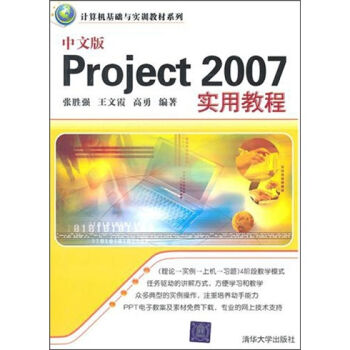

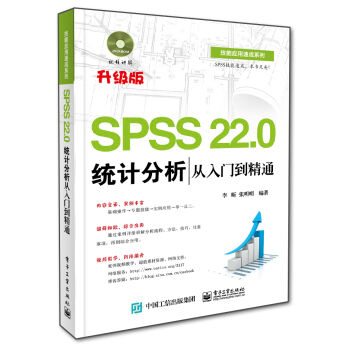
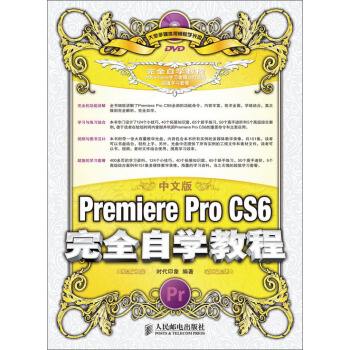
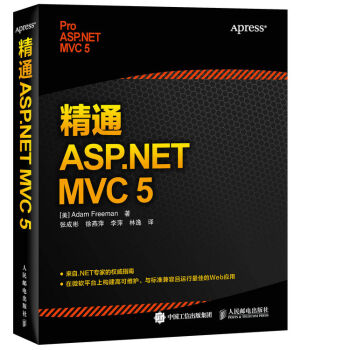
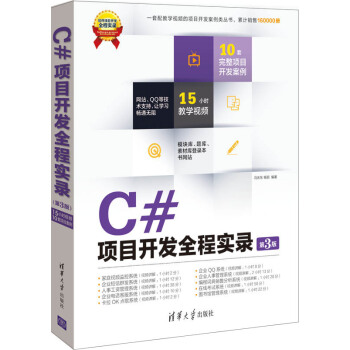
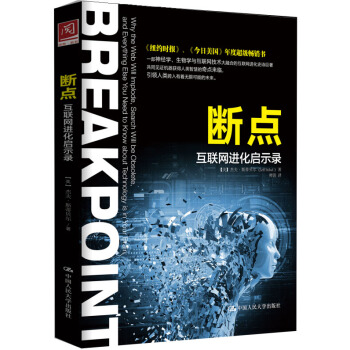

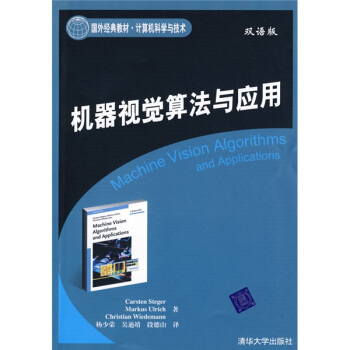
![人工智能复杂问题求解的结构和策略(原书第6版) [Artificial Intelligence] pdf epub mobi 电子书 下载](https://pic.tinynews.org/10059583/57202248N3a75424e.jpg)
